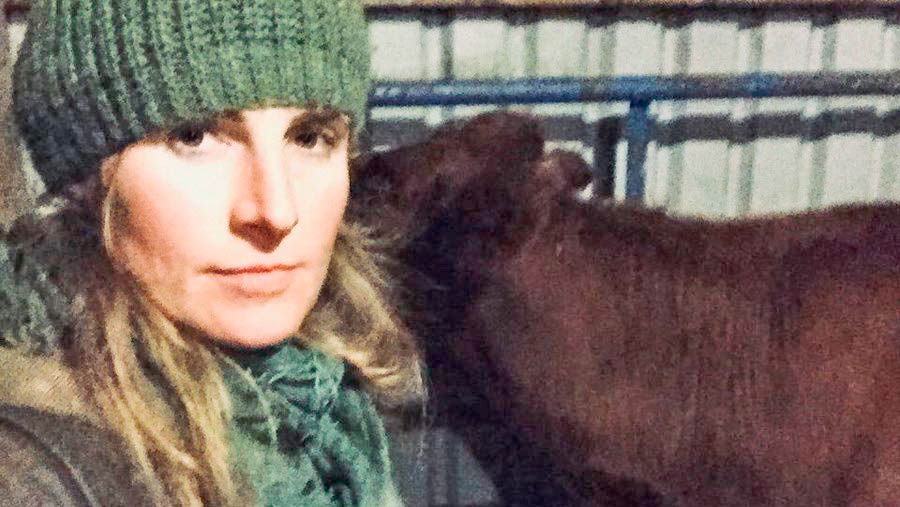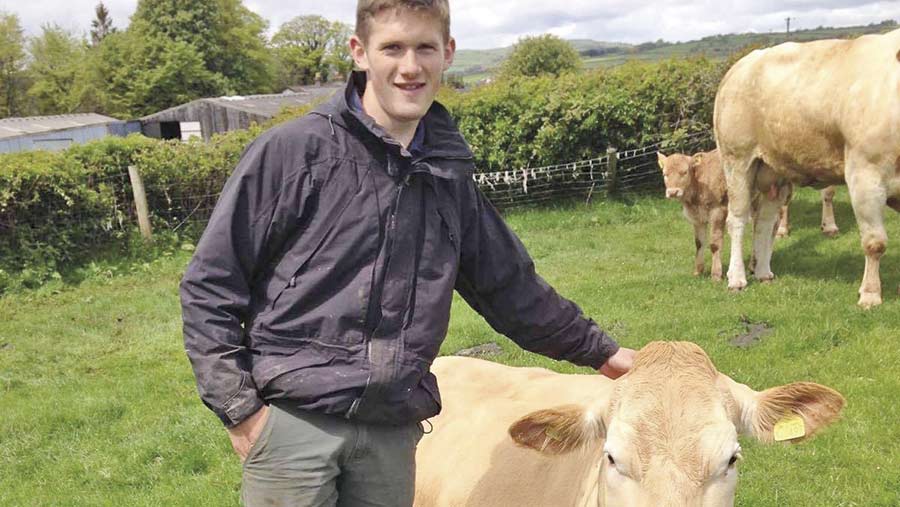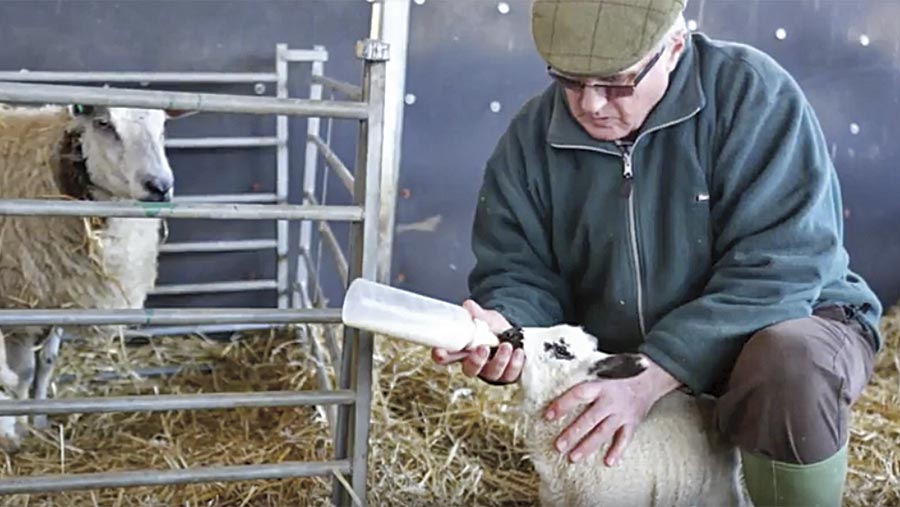How to make the most of social media to promote farming
 © REX/Shutterstock
© REX/Shutterstock Farming continues to have a problem with its public image, with numerous organisations putting the industry down for its environmental and animal welfare record.
Recent examples include the Viva! campaign against modern dairy production and Friends of the Earth’s campaigning against glyphosate.
But farmers are fighting back and are increasingly turning to social media to set the record straight.
Facebook, Twitter, Instagram and YouTube are the most prevalent social networking sites, with LinkedIn, Pinterest, Snapchat and Whatsapp also popular among different demographics.
The rise in popularity of these digital platforms means they have large audiences with whom farmers can have direct conversations.
See also: How farmers are fighting sheep worrying with social media
Glyphosate campaign
One example of this in action was the NFU’s campaign, which used social media to explain the facts behind the controversial weedkiller.
Farmers were encouraged to use the hashtag #glyphosateisvital to disseminate photos, videos, infographics and written statements about the safety and usefulness of the product on their farms, in an attempt to avoid the imposition of an EU-wide ban.
“It is important for the industry to have that voice, otherwise mistruths can spread,” says Simon Haley of social media consultancy Social Jungle. “If there’s a vacuum and lack of information on a subject, then others will step in and tailor the facts to their agenda.”
Strategic approach
Having a good social media strategy is essential. The average social media user in the UK will spend nearly two-and-a-half hours a day online, which is a lot of time wasted if you are not clear on how or why to engage.
“It might be for research; it might be to give your opinion on a particular subject; it might be to connect to others or it might be to share links to articles or other information. But whatever your purpose, make sure you have one,”says Mr Haley.
The digital sphere is a great way of showing the reality of farming, especially on topics such as fly-tipping, sheep worrying or sky lanterns.
“The reality needs to be shown. But make sure you know what type of social media followers you have [age, demographic, location, sector] and then use the platforms to its strengths.
“Most platforms are more than 10 years old, so they are quite intuitive. Find the right balance between adding value to your personal brand and influencing the attitude of your followers, and this is the path to social media success.”
8 top tips for social media success
- Research where you ideal audience/customer is and chose the platform(s) where you can be sure your message is being heard and valued
- Make sure your profile has personality. Post whenever you have something valuable and meaningful to share and the mood takes you
- Really engaging posts, using photos and video, will deliver more value than constant mediocre content. Quality beats quantity every time
- Variety pays. Recycle ideas, refresh their delivery, post at different times of day to capture more of your audience
- Research other social networks and brand profiles. Instagram, Flipboard and Pinterest are great sources of inspiration for content
- Avoid self-promotion. You are not a broadcast tool – you must engage and be sociable. Having an opinion is fine, but engagement is a two-way street
- Use words such as “how, what and why” on social networking sites to encourage participation. Use polls to find out what your audience really thinks
- Listen to the conversations of your audience. People need to know, like and trust you before they will properly engage. Take time to “like” and “share” relevant content produced by others
Simon Haley is co-owner of Social Jungle, a social media consultancy and training company specialising in the food, farming and rural business sectors.
Case study: The tweeting shepherdess
Yorkshire hill farmer Amanda Owen is using Twitter to bring to life the harsh realities of farming in the Dales
Her “YorkshireShepherdess” account (@AmandaOwen8) is one of the most popular farming biographies on Twitter and it has attracted more than 37,500 followers.
She and husband Clive have nine children and together they farm more than 700 Swaledale sheep and 20 Beef Shorthorn across 810ha at Ravenseat Farm, near Keld, Richmond.
Mrs Owen describes herself as a farmer, mother, teamaker and writer, “in no particular order”. She is commonly known in the Twittersphere as the “tweeting shepherdess”.

Amanda Owen
Despite her busy lifestyle, she somehow finds time to post dozens of spectacular photos on Twitter to document all aspects of the farming year and the challenges they face on one of the most isolated farms in England.
Mrs Owen launched her Twitter account in 2012 and since then she has posted more than 21,000 tweets. Her fantastic photos of life on a hill farm regularly gain thousands of retweets and “favourites”.
“I came to Twitter very much accidentally, but soon realised there was genuine interest in what goes on behind the scenes,” she says.
“Putting a face to family farming, showing the human aspect of the industry and maybe helping people to translate what they can see out of the car window is what I aim to do.”
“Social media is a great way to educate people and also a fantastic way to learn yourself, about your consumers.”
Case study: Using Instagram in mid-Wales
Instagram is a photo-based social media platform that has enjoyed a huge surge in popularity over the past five years, with about 500 million people using it on a daily basis.
It is especially popular with younger age groups – about 70% of Farmers Weekly’s Instagram followers are aged between 18 and 34.
Welsh farmer Tom Parry, who is 23 years old, farms sheep, beef cattle and pullets in the Brecon Beacons and started using Instagram about three years ago.
He says this platform has the potential to do the most to promote British farming because photos are shared publicly and the use of hashtags to find photos with a common theme means users don’t have to follow others to discover and engage with their posts.

Tom Parry
“It’s really easy to do – you just take photos on your phone as you go about your day. It’s reaching a wider audience than Facebook, and perhaps even Twitter, because of the hashtags like #UKagriculture and #welshfarming, whereas Facebook and Twitter you tend to follow similar people to yourself.”
Mr Parry also thinks photo sharing is a great way to promote the best of British agriculture, as it’s more visual than a 140-character tweet, although it does revolve around good-looking images.
“That can paint a rather glamorous picture of farming, but the public are engaging with it. I would always rather look at photos than a load of people’s statuses about their lives.”
Mr Parry has people who follow him from all over the world because his photos get them interested in UK farming. He has even sold a ram lamb to a farmer in north Wales who saw his Instagram posts and got in touch.
As with all social media platforms, posts are open to the anti-farming lobby, but Mr Parry says the overwhelming reception from people is positive.
Instagram: @Thomasparry19
Case study: Facebook lambing videos an internet hit
A series of live lambing videos have turned family farmers from Barnsley into an internet sensation.
Roger Nicholson and sons David and Robert had a fan base of more than 5,000 people tuning into their Facebook Live lambing coverage at Cannon Hall Farm in January and February.
The Nicholsons, who were shortlisted for the Farmers Weekly 2017 Diversification Farmer of the Year award, have adopted Facebook Live to promote a general understanding of farming to the public, as well as their farm shop and farm park – one of the biggest adventure playgrounds in the North.
Their live broadcasts educate viewers about life on the farm – for example, when 300 ewes were due to lamb in February.

Cannon Hall lambing
They have also captured a live lamb birth, a lamb that was successfully fostered onto a new mum that lost her baby, and triplets less than a week old being bottle-fed by Roger.
In June, more than 2.3 million people viewed content on Cannon Hall Farm’s Facebook page and there were 490,157 engagements – clicks, likes, shares and comments – posted. The numbers surpassed Chester Zoo.
Their Facebook page (@CannonHallFarm) has more than 101,000 “likes”. The Nicholsons are also very active on Twitter and Instagram, having gained more than 28,600 and 6,150 followers respectively.
Ways to get in touch
- Email: farmersweekly@proagrica.com
- Facebook: farmersweeklyuk
- Twitter: @farmersweekly
- Instagram: @farmersweeky
- Whatsapp: 07881 803 480
